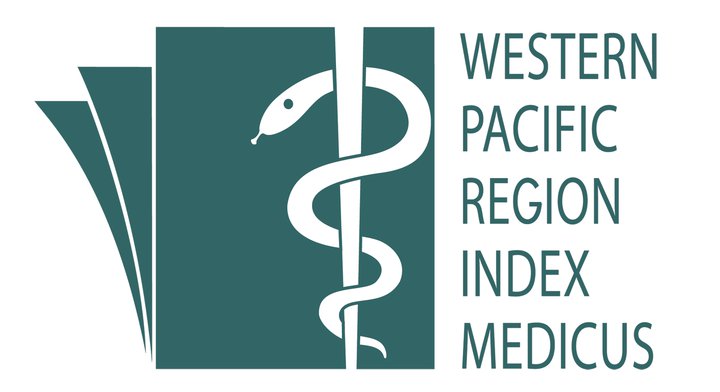Trend of Stillbirths and Neonatal Deaths in University Kebangsaan Malaysia Medical Centre (UKMMC) From 2004-2010
Keywords:
Stillbirth - Neonatal mortality – MDG.Abstract
Introduction
The aim of the Fourth Millennium Developmental Goal is to reduce mortality among children less than 5 years by two thirds between 1990 and 2015. Efforts are more focus on improving children’s health. The aim of this study was to describe the trend of stillbirth and neonatal deaths in University Kebangsaan Malaysia Medical Centre from 2004 to 2010.
Methods
A retrospective cross-sectional study was conducted using hospital data on perinatal mortality and monthly census delivery statistics.
Results
There were 45,277 deliveries with 526 stillbirths and neonatal deaths. More than half of the stillborn cases were classified as normally formed macerated stillbirth and prematurity was common in neonatal deaths. The trend of SB and NND was found fluctuating in this study. However, by using proportionate test comparing rate, there was a transient significant decline of stillbirth but not neonatal deaths rates between 2004 and 2006. On the other hand, the neonatal deaths rate showed significant increment from 2006 to 2008. When both mortality rates were compared using proportionate test, from the start of the study, year 2004 with end of the study, year 2010, there was no significant decline noted.
Conclusions
Trends of stillbirth and neonatal death rates in University Kebangsaan Malaysia Medical Centre within 7 years study period did not show the expected outcome as in Millennium Developmental Goal of two thirds reduction.
Â
References
Lawn JE, Cousens S, Zupan J, Lancet Neonatal Survival Steering Team. 4 million neonatal deaths: Lancet. 2005; 365(9462):891-900.
WHO SEARO. Operationalizing the Neonatal Health Care Strategy in SouthEast Asia Region 11th Meeting of Health Secretaries of Member States of SEARO New Delhi India. 2006.
World Health Organization. Neonatal and Perinatal Mortality Country Regional and Global Estimates. 2006.
McClure EM, Nalubamba-Phiri M, Goldenberg RL. Stillbirth in developing countries.Int J Gynaecol Obstet. 2006; 94(2):82-90.
Goldberg R, McClure E, Belizan J. Reducing the worlds’ stillbirths. BMC Pregnancy and Childbirth. 2009; 9(Suppl 1), S1.
Chee HL, Barraclough S. Health care in Malaysia. Kuala Lumpur:Taylor& Francis; 2007.
Ministry of Health Malaysia. Annual Report 2008: Family Health Development Malaysia. 2009.
Ministry of Health, Malaysia. Annual Report 1998. Stillbirths and neonatal deaths in Malaysia The National Technical Committee on Perinatal Health. 2000.
Amar HS, Maimunah AH, Wong SL. Use of Wigglesworth pathophysiological classification for perinatal mortality in Malaysia. Arch Dis Child Foetal Neonatal Ed. 1996;74 (1):F56-9.
Sutan R. A review of determinant factors of stillbirths in Malaysia. Journal Community Health. 2008;14: 68-77.
Malaysia Hospital Universiti Kebangsaan Malaysia (HUKM). External Evaluator Field Survey.http://www.jica.go.jp/english/operations/evaluation/oda_loan/post//pdf/e_project32_full.pdf. 2008.
Ministry of Health Malaysia. Report on Stillbirths and neonatal deaths in Malaysia 2003-2006. Kuala Lumpur: 2009.
World Health Organization. Health statistics and health information systems. 2011.
Sameshima H, Ikenoue T. Risk factors for perinatal deaths in Southern Japan: Population-based analysis from 1998 to 2005. Early Human Development. 2007;84:319-323.
Barfield WD, Tomashek KM, Flowers LM, Iyasu S. Contribution of late foetal deaths to US perinatal mortality rates, 1995-1998. SeminPerinatol. 2002; 26(1):17-24.
Boon NY. Singapore Med J. Neonatal resuscitation programme in Malaysia: an eight-year experience. 2009; 50:152-60.
Joyce R, Webb R, Peacock JL. Associations between perinatal interventions and hospital stillbirth rates and neonatal mortality. Arch dis Child Foetal Neonatal Ed .2004;89:F51-F56.
Winbo IG, Serenius FH, Dahlquist GG, Källén BA. NICE, a new cause of death classification for stillbirths and neonatal deaths. Int J Epidemiol. 1998; 27(3):499-504.
Tan A.2011 Prenatal Genetic Screening and Testing [Internet]. 2011 [cited 2012 Jan 18]. Available from: http://www.bioethics.singapore.org/.
Zekawi Z, Muizatul W, Marlyn M, Jamil M, Illina I. Rubella vaccination programme in Malaysia: Analysis of a seroprevalence study in an antenatal clinic. Med J Malaysia. 2005; 60:345-9.
Bloom S, Lippeveld T, Wypij D. Does antenatal care make a difference to safe delivery? A study in urban Uttar Pradesh, India. Health Policy and Planning.1999;14:38-48.
Ministry of Health Malaysia. Perinatal Care Manual: Intrapartum Care. Kuala Lumpur: 2010.
Ministry of Health Malaysia. Perinatal Care Manual: Pre pregnancy. Kuala Lumpur: 2010.
Ministry of Health Malaysia. Perinatal Care Manual: Antenatal Care. Kuala Lumpur: 2010.
Ministry of Health Malaysia. Perinatal Care Manual: Neonatal Care. 2010.
Eeng TA and MohamadRazi ZR. Pregnancy guidelines for Malaysian women. Kuala Lumpur: National University of Malaysia; 2007.
Mahmud AB, Sallam AA. Analysis of birth weight data from the Malaysian Family Life Survey II.Asia Pac J Public Health. 1999; 11(2):71-6.
Singh G, Chouhan R, Sidhu M. Maternal Factors for Low Birth Weight Babies. Medical Journal of Armed Forces India.2009; 65: 10-12.
Kramer MS. The epidemiology of adverse pregnancy outcomes: an overview. J Nutr. 2003;133(5 Suppl 2):1592S-6S.
Downloads
Additional Files
Published
How to Cite
Issue
Section
License
IJPHR applies the Creative Commons Attribution (CC BY) license to articles and other works we publish. If you submit your paper for publication by IJPHR, you agree to have the CC BY license applied to your work. Under this Open Access license, you as the author agree that anyone can reuse your article in whole or part for any purpose, for free, even for commercial purposes. Anyone may copy, distribute, or reuse the content as long as the author and original source are properly cited. This facilitates freedom in re-use and also ensures that IJPHR content can be mined without barriers for the needs of research.






